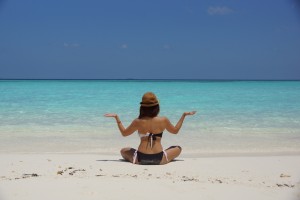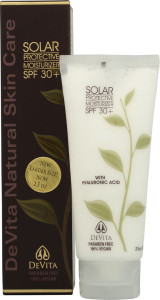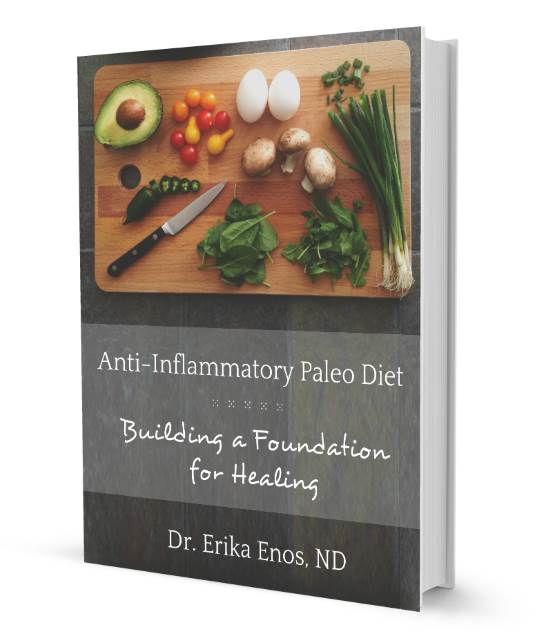 Welcome to summer in full swing! In both Colorado and California we have at least a couple more months left of sunny summer weather. I often recommend to patients that they spend at least 30 minutes outside, rain or shine, winter, spring, summer, or fall. This time of year there is a lot of shine happening! Being out-of-doors has some inherent benefits, like natural vitamin D production, fresh air, and the grounding effects of nature. It also has some inherent risks—like over exposure to the sun, which can contribute to wrinkles, signs of aging, and the development of some types of skin cancer. Over-exposure to the wrong types of sun protection (such as certain sunscreens) in an attempt to avoid these issues can also be risky.
Welcome to summer in full swing! In both Colorado and California we have at least a couple more months left of sunny summer weather. I often recommend to patients that they spend at least 30 minutes outside, rain or shine, winter, spring, summer, or fall. This time of year there is a lot of shine happening! Being out-of-doors has some inherent benefits, like natural vitamin D production, fresh air, and the grounding effects of nature. It also has some inherent risks—like over exposure to the sun, which can contribute to wrinkles, signs of aging, and the development of some types of skin cancer. Over-exposure to the wrong types of sun protection (such as certain sunscreens) in an attempt to avoid these issues can also be risky.
While sunscreen may prevent you from being burned and decrease signs of aging, it also blocks your body’s natural production of vitamin D, a compound important to cancer prevention. And, some studies suggest many sunscreens may not be protecting you from cancer either. The Environmental Working Group, a watchdog group devoted to environmental health research and advocacy, compiles a comprehensive guide on sunscreen each summer. Their Guide to Sunscreens is an informative read.
Good Information about Sun Protection & Sunscreens
- High SPF can be misleading. The higher the SPF (sun protection factor), the more likely it is to be applied incorrectly and infrequently—in other words, because people think the protection is great, they are spending more time in the sun and water and aren’t necessarily applying enough or often enough. Additionally, SPFs above 50 have negligible benefit, which means skip the SPF 100… SPF 30 is likely just fine as long as it is used correctly.
- Chemical ingredients in most sunscreens have been linked to skin damage, hormone disruption, and skin irritation. By choosing sunscreens that use minerals rather than chemicals to filter the sun, this can be avoided.
- The addition of Vitamin A, reported to reduce signs of skin aging, to sunscreens may actually promote the development and growth of tumors. Yikes!
- Most sunscreens concentrate on UVB protection rather than UVA protection. UVA penetrates more deeply into the skin and promotes the production of free radicals—dangerous substances that damage DNA. Sunscreens aren’t protecting you as comprehensively as they suggest.
- Melanoma, the most deadly of skin cancers, often appears in areas not exposed to sunshine at all. Research is controversial about whether sunscreen actually offers any protection against this type of cancer.
All of this doesn’t mean that sunscreen doesn’t have its time and place. It does. But, perhaps sunscreen doesn’t need to be used daily by everyone and it certainly suggests that sunscreen producers need to more responsible with the products they produce as will as with labeling. It also means that as consumers, we need to be discriminating in choosing sunscreen brands.
 My current favorite is Devita, a mineral-based sunscreen. Mineral-based sunscreens are effective, non-toxic forms of protection. Devita’s Solar Protective Moisturizer SPF 30
My current favorite is Devita, a mineral-based sunscreen. Mineral-based sunscreens are effective, non-toxic forms of protection. Devita’s Solar Protective Moisturizer SPF 30, a facial moisturizer with sunscreen, is light and doesn’t give the skin a white film like some mineral based sunscreens. This product causes no breakouts and contains no chemicals. Devita’s full body sunscreen, Devita Skin Care Body Block Spf 30, can sometimes leave a whitish color on the skin. I have found that applying it to very slightly damp skin helps it to spread more smoothly without this problem. (Be careful that your skin isn’t so wet that the sunscreen does not adhere.) Unfortunately, mineral-based sunscreens are not usually waterproof (or sweat-proof). With all sunscreens, reapply frequently (every couple of hours) and be sure to apply an adequate layer.
The Sun & Cancer
Development of skin cancer is more strongly associated with sunburns than with simple sun exposure. This means that slowly building a base tan, which is protective against burning, is helpful in preventing burns and therefore cancer. Building a base tan also allows you to produce vitamin D which will not happen if you are always wearing sunscreen or avoiding the sun altogether. Avoiding sun exposure during peak hours (roughly 12 -3 pm, depending on where you live) also minimizes burn risk. Utilizing shade, hats, and clothing are other first line tactics for preventing burns and decreasing sun-related signs of aging without the use of chemicals.
To soothe and nourish your skin after sun exposure, I recommend applying Weleda Sea Buckthorn Body Oil by Weleda. Made from sesame oil and citrus essential oils, it feels luxurious.
 Lastly, and as always, a diet rich in antioxidants (think an abundance of vegetables and fruits in a variety of colors) will help mitigate signs of aging from sun exposure. Healthy beautiful skin always starts from the inside out.
Lastly, and as always, a diet rich in antioxidants (think an abundance of vegetables and fruits in a variety of colors) will help mitigate signs of aging from sun exposure. Healthy beautiful skin always starts from the inside out.
(Amazon Affiliate links are located in this post.)
